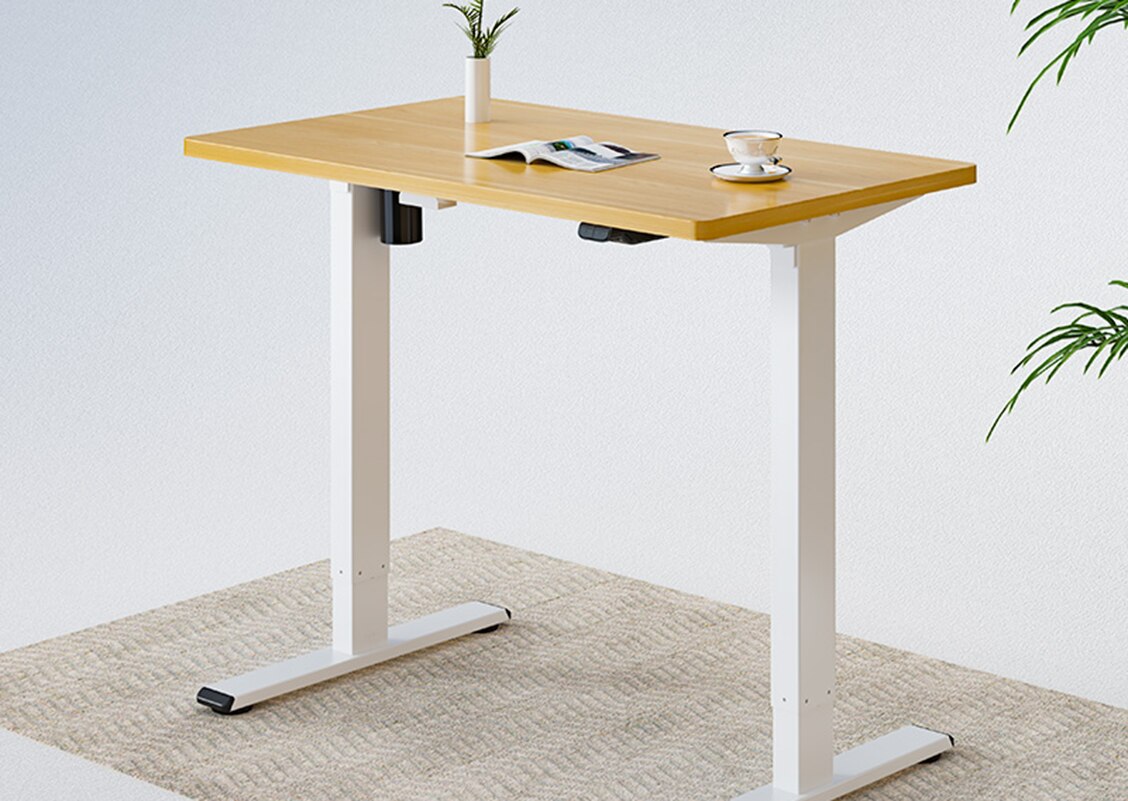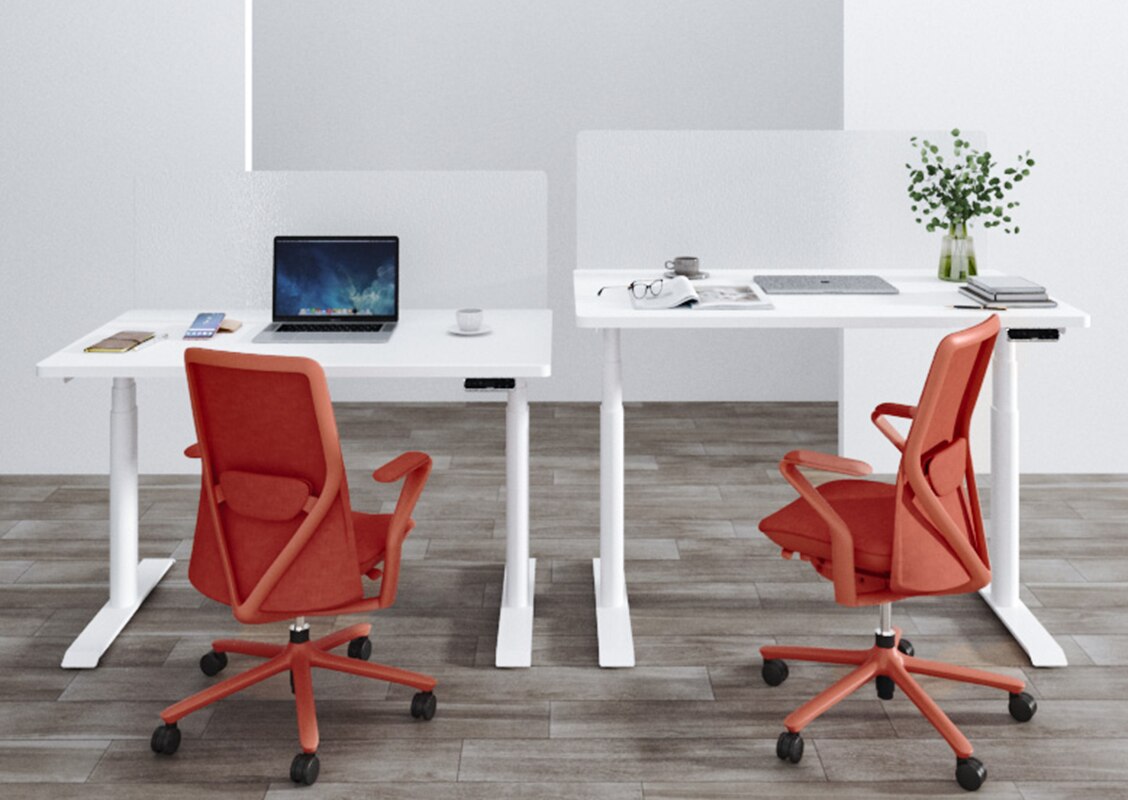The modern workplace has undergone significant transformations in recent years, recognizing the importance of employee well-being and productivity. One crucial aspect that directly influences productivity is the office environment. Creating an office space that promotes comfort, flexibility, and ergonomic design can have a profound impact on employee performance. Want to explore the positive effects of incorporating standing desks, height-adjustable desks, and ergonomic chairs in the office setting? Keep reading!
The Rise of Standing Desks
In recent years, standing desks have experienced a surge in popularity because of their wide range of health benefits and their ability to potentially boost productivity. Extensive research has indicated that extended periods of sitting can contribute to a host of health problems, including obesity, back pain, and diminished concentration.
By incorporating standing desks into the workplace, individuals have the opportunity to alternate between sitting and standing positions during their work hours. This dynamic approach encourages better posture, enhanced blood circulation, and heightened energy levels, which ultimately translate into increased productivity levels. With the potential to alleviate health issues and bolster overall well-being, a standing desk can become a sought-after solution for individuals seeking to improve both their work performance and their overall quality of life.
The Benefits of Height-Adjustable Desks

Height-adjustable desks have revolutionized the modern workplace by granting employees the freedom to personalize their workstations according to their desired height. By offering the ability to seamlessly transition between sitting and standing positions, these desks combine the benefits of traditional seated work with the advantages of standing desks. This versatility is instrumental in combating the adverse effects of prolonged sitting, such as musculoskeletal disorders and decreased productivity.
Moreover, an adjustable height desk promotes a sense of autonomy among employees, empowering them to create a workspace that aligns with their specific preferences & requirements. This personalized approach not only enhances productivity but also fosters a greater sense of satisfaction and well-being among workers. By investing in height-adjustable desks, companies prioritize the health, comfort, and overall productivity of their workforce.
Ergonomic Chairs for Optimal Comfort

Office chairs hold a critical position in ensuring the comfort and overall well-being of employees. Among the various types available, ergonomic chairs stand out as they are purposefully designed to accommodate the human body's needs. These chairs boast adjustable features that contribute to maintaining proper posture and alleviating strain on muscles and joints. Key elements of ergonomic chairs include adjustable seat height, lumbar support, and armrests.
The ability to tailor these features to individual preferences and body proportions promotes optimal spinal alignment, reduces the risk of back pain, and minimizes discomfort throughout the workday. With the right support in place, employees can concentrate on their tasks without the distraction of physical discomfort, leading to enhanced focus, increased productivity, and improved overall job satisfaction. By prioritizing the provision of an ergonomic chair, employers prioritize the well-being and performance of their workforce.
Enhancing Collaboration and Communication
Creating an optimized office environment involves more than just focusing on individual workstations; it extends to shared spaces as well. Collaborative areas, including meeting rooms and breakout spaces, play a vital role in fostering teamwork, stimulating creativity, and facilitating effective communication. To maximize the potential of these spaces, it is crucial to incorporate ergonomic furniture that supports collaboration. Standing tables, for example, promote an active and engaged posture, while collaborative seating options, such as a comfortable office chair or flexible seating arrangements, encourage interaction and idea sharing.
Additionally, integrating mobile furniture, like rolling whiteboards or portable workstations, allows for easy reconfiguration and adaptability to different collaboration needs. By creating such dynamic spaces, companies empower their employees with the freedom to move, collaborate, and exchange ideas, ultimately leading to heightened productivity, innovation, and collective success.
The Psychological Impact of Standing Desks
The office environment plays a vital role in shaping the psychological well-being of employees, and this, in turn, has a profound impact on their productivity. A thoughtfully designed workspace that incorporates elements of nature can have transformative effects on employees' mental states. One key element is ample natural light, which has been scientifically linked to improved mood, increased alertness, and better sleep patterns. By maximizing the natural light use through large windows or skylights, employers can create an environment that promotes a sense of openness, positivity, and overall well-being.
In addition to natural light, integrating biophilic design principles further enhances the office environment. Indoor plants, for instance, can purify the air and create a more calming atmosphere. Natural textures, such as wood or stone, bring you a sense of grounding and connection to the natural world. By incorporating these elements, employers can foster a more rejuvenating and refreshing workplace that positively impacts employee well-being.
The benefits of such design choices go beyond aesthetics; they contribute to higher levels of job satisfaction, reduced stress, and increased productivity. By prioritizing the integration of nature-inspired elements in the office, employers show a commitment to developing an environment supporting the holistic well-being of their workforce, ultimately leading to enhanced productivity and overall success.
An Office Wellness Program
In addition to providing ergonomic furniture, companies can further support employee productivity by implementing an office wellness program. These programs may include initiatives such as regular exercise breaks, ergonomic assessments, mindfulness sessions, and health education. By promoting a culture of well-being, employers show their commitment to their employees' health and encourage a more productive workforce.
Conclusion
Investing in the office environment is a strategic decision that can offer significant benefits for both businesses and employees. Incorporating standing desks, height-adjustable desks, ergonomic chairs, and other elements of ergonomic design from Flexispot can enhance employee productivity, satisfaction, and overall well-being. By creating a workspace that prioritizes comfort, flexibility, and collaboration, companies can unlock the full potential of their workforce and foster a positive work culture that drives success.